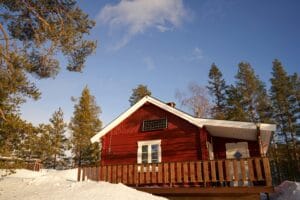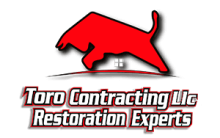Imagine waking up to a powerful storm sweeping through Maryland, rain pelting against your windows and wind howling fiercely outside. Your home stands tall and strong,, sheltering you from the relentless weather elements. What makes this possible? One crucial yet often overlooked detail , your siding. Specifically, weather resistant siding that acts as an unsung hero, defending your home from Maryland’s unpredictable rain and wind.
If you’ve ever dealt with water damage, drafts, or warping caused by harsh weather, you know the importance of quality siding firsthand. In Maryland, where seasons shift dramatically and storms can come without warning, investing in weather resistant siding is not just smart , it’s essential for protecting your home’s structure, value, and your peace of mind.
In this article, you will discover the best weather resistant siding options available in Maryland. We’ll dive into materials that withstand torrential downpours and gusty winds, comparisons between popular siding types, and tips to choose the perfect fit for your home’s style and needs. Whether you’re building a new house or upgrading your current siding, understanding how weather resistant siding works is the key to making a lasting investment.
From vinyl and fiber cement to engineered wood and metal siding, each option offers unique benefits in durability and weather protection. You’ll learn how these materials hold up against moisture, resist wind damage, and require minimal maintenance, all while enhancing curb appeal. We’ll also cover how professional installation plays a vital role in maximizing the weather resistance of your siding.
By the end of this guide, you’ll be equipped with the knowledge to choose weather resistant siding that safeguards your Maryland home year-round , ensuring comfort, safety, and long-term savings. Don’t let rain and wind compromise your home’s integrity. Let’s explore how the right siding can be the shield your home deserves.
Key Takeaways
Weather-resistant siding acts as your home’s first line of defense against rain, wind, and humidity, ensuring year-round protection and comfort.
Maryland’s changing climate—marked by storms, moisture, and temperature swings—demands durable siding materials that resist warping, cracking, and leaks.
Top materials like fiber cement, vinyl, engineered wood, and metal siding offer superior durability, moisture control, and low maintenance.
Proper installation and sealing are crucial to preventing water infiltration and maximizing your siding’s lifespan and performance.
Investing in weather-resistant siding enhances your home’s energy efficiency, value, and curb appeal while providing long-term peace of mind.
Why Weather Resistant Siding Is More Important Than You Think
When it comes to protecting your home in Maryland, weather resistant siding is not just a luxury, it’s a necessity. Maryland’s unique climate, characterized by its humid summers, frequent rainstorms, and strong winds, demands a siding solution that can withstand these elements year-round. But what exactly is weather resistant siding, and why should homeowners in Maryland prioritize it?
Weather resistant siding refers to exterior cladding materials specifically designed to repel water, resist wind damage, and prevent moisture infiltration. Unlike traditional siding options, weather resistant materials include advanced technologies and durable coatings that create a tough barrier against harsh weather conditions.
The importance of investing in weather resistant siding cannot be overstated. According to the National Oceanic and Atmospheric Administration (NOAA), Maryland experiences an average of 40 to 50 inches of rainfall annually, alongside powerful coastal storms and periods of intense humidity. Without the right siding, homes can suffer from water damage, mold growth, and structural deterioration, issues that lead to costly repairs and decreased property value.
Take, for example, the story of the Johnson family from Annapolis. After their home endured heavy storms during a particularly wet season, their old wood siding began to warp and rot, allowing water to seep into the walls. They decided to replace it with a high-quality weather resistant fiber cement siding. Since the installation, the Johnsons have noticed a dramatic improvement in their home’s protection against rain and wind, with no signs of water damage even after storms. Moreover, their energy bills have decreased because the siding’s insulation properties help regulate indoor temperature more effectively.
By choosing weather resistant siding, Maryland homeowners are not only safeguarding their investment but also enhancing their home’s energy efficiency and curb appeal. This makes weather resistant siding a vital component in building a durable, comfortable, and beautiful home in the face of Maryland’s challenging weather conditions.
Tips for Choosing Weather-Resistant Siding in Maryland to Protect Your Home from Rain and Wind:
✅ Opt for Fiber Cement Siding: This material is highly durable and resistant to moisture, making it perfect for Maryland’s rainy climate.
✅ Consider Vinyl Siding with a Weather-Resistant Coating: Vinyl siding that includes added protective layers can better withstand wind and heavy rain without warping or cracking.
✅ Look for Proper Sealing and Caulking: Ensure all seams and edges are expertly sealed to prevent water infiltration that can damage your home structure over time.
✅ Choose Siding with Built-In Water Resistance: Some products come with a water-resistant barrier or flashing integrated, providing an extra defense against harsh weather conditions.
✅ Install Impact-Resistant Panels: In areas prone to strong winds, siding designed to endure impacts from debris helps maintain your home’s exterior integrity.
✅ Regular Maintenance Checks: Periodically inspect siding for any cracks, loose panels, or signs of wear to address weather damage early and maintain protection.
✅ Consider Insulated Siding Options: Insulated siding adds an extra layer of protection not only against rain and wind but also improves energy efficiency during Maryland’s seasonal temperature changes.
✅ Hire Experienced Local Contractors: Maryland-based siding professionals understand the specific weather challenges and can recommend and install the best weather-resistant options for your home.
💡 Extra Tip: Pair your weather-resistant siding with quality gutters and downspouts to ensure rainwater is effectively redirected away from your home’s foundation.

Key Concepts of Weather Resistant Siding
When we think about protecting a home in Maryland, a place where the whims of rain, wind, and fluctuating seasons constantly test the endurance of a house, the notion of weather resistant siding becomes not just a feature, but a fortress. Weather resistant siding is akin to a shield borne by your home, crafted to withstand and repel the relentless forces of nature, ensuring that the core of your structure remains dry, insulated, and intact. Let’s delve into the essence of what this siding means and why it is vital in climates burdened by the elements.
The Essence of Weather Resistance in Siding
Imagine your home as a medieval castle , its walls are the shield that guards the precious interior against invaders. These invaders, in the case of Maryland’s climate, come in the form of wind-driven rains, gusts that can sneak into the tiniest crevice, and the slow but persistent erosion caused by moisture and temperature cycles. Weather resistant siding acts like layers of armor specifically designed to repel these forces.
At its core, weather resistant siding isn’t just about being tough; it’s about resilience and adaptability. It includes materials engineered to resist penetration by water and wind, but also capable of expanding and contracting with temperature changes without cracking or warping. This dynamic flexibility ensures longevity and maintains the siding’s protective qualities over time.
Understanding How Weather Resistant Siding Works: A Barrier and a Breath
One of the central paradoxes in weather resistant siding is the need to be both an impenetrable barrier and a breathable membrane. Think of it like a smart raincoat for your home: it keeps the rain out but allows inside moisture to escape, preventing buildup that could rot the underlying structure. This balance is crucial because simply sealing everything airtight can trap moisture, breeding mold, and deterioration. Advanced siding options incorporate this duality through specialized materials and installation techniques that promote drainage and ventilation behind the boards, akin to channels in armor that let air circulate without compromising defense.
The Role of Materials: More than Skin-Deep Strength
Weather resistant siding derives its power from the materials used, each bringing unique benefits and challenges:
– Fiber Cement: Often considered the heavyweight champion for weather resistance, fiber cement siding resembles wood in appearance but boasts resistance to water, wind, and fire. It is dense and impervious, a metaphorical stone wall against the tempest.
– Vinyl: Lightweight and versatile, vinyl siding can repel moisture effectively and is manufactured to resist fading from sun exposure, but its flexibility means it can sway rather than break under wind pressure, like a reed bending but not snapping.
– Engineered Wood: Treated and manufactured for better durability than natural wood, engineered wood offers a warm aesthetic with enhanced resistance. Its layered construction acts somewhat like the laminated armor plates of historic knights, balancing strength and lightweight properties.
Each material’s properties shape how it performs under Maryland’s shifting weather conditions, reminding us that weather resistant siding is as much about composition as it is about design.
Integration with Home Design: The Invisible Battlefront
While the visible exterior of siding draws immediate attention, its true work happens at the interfaces, where siding meets windows, doors, and foundation. These junctions are often the battlefield lines where wind-driven rain tries to infiltrate. Weather resistant siding systems come equipped with intricate design details like interlocking panels, water-resistant barriers behind the siding, and precision in sealing edges that elevate the home’s defense from superficial to systemic.
Consider the siding as a mosaic shield: its strength lies not only in the individual tiles but also in the precise fit and seal between them. Each seam and connection must be treated as a potential weak point that could turn a gentle drizzle into a damaging leak.
The Psychological Comfort of Weather Resistant Siding
Beyond the tangible protection it offers, weather resistant siding instills a layer of psychological security. Imagine a Maryland homeowner listening to a violent March thunderstorm battering the windows. The weather resistant siding, silently and steadfastly defending the walls, offers peace of mind akin to having a vigilant guardian at the gates. This invisible comfort transforms a house from a mere building into a sanctuary.
#Weather Resistance as an Investment in Durability and Sustainability
Lastly, consider weather resistant siding as an investment that transcends aesthetics. Its resilience reduces the need for frequent repairs and replacements, effectively diminishing waste and consumption over time. This eco-conscious facet aligns durability with sustainability, where protecting the home also means nurturing the environment. Just as a seasoned sailor trusts a finely crafted hull to weather many voyages, a home with weather resistant siding is prepared for many seasons of Maryland’s relentless climate.
By viewing weather resistant siding through this lens of endurance, flexibility, design precision, and psychological assurance, we appreciate it not merely as a construction material, but as a sophisticated defense system tailored for home preservation in Maryland’s unique weather theater. It is the quiet, stalwart protector that assures your home remains dry, secure, and timeless despite the passing storms.
Frequently Asked Questions about Weather Resistant Siding
❓ What is weather resistant siding?
Weather resistant siding is an exterior cladding designed to protect your home from harsh weather conditions like rain, wind, and humidity. It is made from durable materials that prevent water infiltration and withstand strong winds, which is especially important in Maryland’s variable climate.
❓ Why is weather resistant siding important for homes in Maryland?
Maryland experiences a mix of heavy rain, coastal storms, and high winds, making weather resistant siding crucial to prevent damage. This type of siding helps maintain your home’s structural integrity, reduces maintenance costs, and improves energy efficiency by sealing out moisture and drafts.
❓ What materials are commonly used for weather resistant siding?
Popular options include fiber cement, vinyl, engineered wood, and metal siding. Each offers unique benefits: fiber cement is highly durable and moisture-resistant; vinyl is low-maintenance and affordable; engineered wood combines beauty with enhanced protection; and metal siding provides superior wind resistance.
❓ How can I tell if my current siding is weather resistant?
Look for signs of water damage, peeling paint, or warping after storms. Weather resistant siding typically has a solid, seal-tight installation with materials that repulse water. You can also check product specifications or consult a siding professional to assess your home’s exterior.
❓ Can weather resistant siding improve my home’s energy efficiency?
Yes, many weather resistant sidings offer insulation properties that reduce heat loss during cold months and keep interiors cooler when it’s hot. This can lower your energy bills and create a more comfortable living environment, an important consideration for Maryland homeowners facing seasonal weather swings.






